As an Amazon Associate I earn from qualifying purchases.
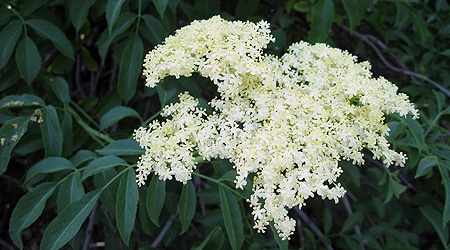
April is a wonderful month. Flowers are everywhere, fishing is getting into gear and the summer garden is laden with promise. Foraging can be a little thin in my neck of the woods, however, as the greens are starting to go as the weather warms, But there is one delight to be had: Elderberry flowers.
Finding the buttercream flowers isn’t too tough: Elderberries grow everywhere near rivers, and the American River is loaded with bushes big and small. I’ve never seen them before mid-April in Northern California, but they bloom even earlier in SoCal, and in the Southeast. I’ve seen elderflowers all over the place in Georgia and Florida in early spring. The farther north you live, the later you must wait.
Keep in mind that an elderberry bush is a large plant, and can even grow into a small tree. Study the leaves in the photo above: They are a lush dark green, slightly serrated on their edges, and form on stalks; each leaf should be opposite to another. The flowers are cream-colored, not white. Sometimes over-eager foragers fail to look at the plant they are picking from and grab hemlock by mistake. This can be fatal. But hemlock looks nothing like elderberry, so I have a tough time figuring out how this mistake happens…
A good rule to live by is to not take more than a few flower heads from each elderberry bush: This ensures that the bush will have enough to spread itself, it makes you find more bushes — it’s never a good thing to have only one spot for anything you forage for — and, most importantly, selective picking means you can come back in a few months for the berries.

Only choose the most beautiful flower heads; you don’t want flowers that have yet to open or are past their prime. Collect them in a paper bag so they can breathe. Plastic will make them wilt and sweat.
You will need a lot of flowers to make cordial, and even then the flavors of these sunny drinks are subtle. What does it taste like? It is more of an aroma thing, although the elderflower “lemonade” I am drinking right now has a certain tannic backbone to it that says it is not just lemonade.
It does look like lemonade, doesn’t it? There’s a reason. You make the base for elderflower cordial by preparing a simple syrup (1:1 sugar to water), bringing it to a boil and pouring it over lemon zest, a little lemon juice, LOTS of elderflowers, and a little citric acid, which adds flavor and keeps everything stable. You let this sit at room temperature for 2-4 days to macerate, and the result after you strain it through cheesecloth is this lovely-looking syrup.
NOTE: If you just want to make an elderflower simple syrup, which will ferment very fast if you don’t keep it really cold, skip all the lemon and citric acid. For a quart, boil 3 cups sugar and 3 cups water. Let it cool enough so you can stick your finger in it, then pour it over a quart Mason jar full of elderflowers. Steep 24-48 hours, then strain. Use within 3 weeks.
I add about a tablespoon of the syrup to a pint of water to make a drink with the level of flavor Gatorade has; add more syrup for a stronger drink. It tastes a lot like an Arnold Palmer (50-50 iced sweet tea and lemonade), but as elderflowers are known to be seriously good for you, I like this better.
Holly added some syrup to vodka to make an “Elder-tini,” which, when added to some cherries, make a damn good cocktail. Elderflower syrup is also excellent mixed with Champange (a classic), and its Italian cousin Prosecco. Heather makes a drink called a Caddisfly Nymph, which is elderflower syrup, Prosecco and a touch of Peychaud bitters.
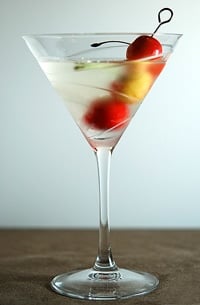
[recipe_name]elderflower cordial[/recipe_name]
[summary]This floral, sweet-smelling syrup is a perfect match with seltzer water or, better yet, champagne. I add lemon to my elderflower syrup to give it some zing, but the aroma is all elderflower. It is a delicate scent, very sweet and just a bit spicy.
The two difficulties in making this syrup are time and one special ingredient: Citric Acid. You need this to help keep the syrup from molding up on you in the fridge; it also adds acidity to the cordial as well (as you might imagine from an acid…) You can find it at any brew shop, or buy citric acid online.
As for time, you need to infuse the flowers for at least 2 days, preferably three; I have seen other recipes that call for four days, but you might get spontaneous fermentation holding it that long. [/summary]
[yield]Makes about 1 quart of syrup. [/yield]
Prep Time: [preptime time=30M] 30 minutes [/preptime]
Cook Time: [cooktime time=15M] 15 minutes [/cooktime]
- 1 quart water
- 4 cups sugar
- Juice of 2 lemons
- Zest of 2 lemons
- 1 teaspoon citric acid
- 25 elderflower heads, stems removed (about 2 cups flowers)
__________
[instructions]
- Snip off the flowers from the stalks into a large bowl or bucket that will hold everything. Try to remove as much of the stems as you can; they are toxic. A few stray bits of stems will not hurt you, but you want to minimize it.
- Zest the lemons and add it to the bowl, then the citric acid and lemon juice.
- Bring the sugar and water to a boil, stirring occasionally to dissolve. Let the syrup cool enough so that you can stick your finger in it without getting burned; you can leave it to cool to room temperature, too. Pour the syrup over the flowers, lemons et al and stir to combine. Cover the bowl or bucket with a towel and leave it for 2-4 days.
- When you are ready, strain it through a fine-meshed sieve lined with cheesecloth or a paper towel into a clean Mason jar. Seal the jar and store in the fridge.
- To serve, pour 1-3 tablespoons of the syrup into a pint glass and add water or seltzer. Or you can add a tablespoon to a glass of sparkling wine, or to a couple shots of vodka or gin.
[/instructions]
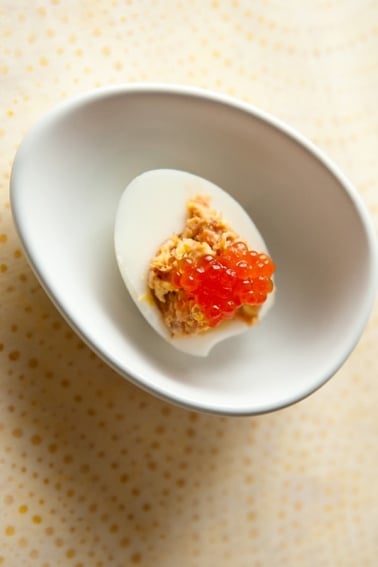
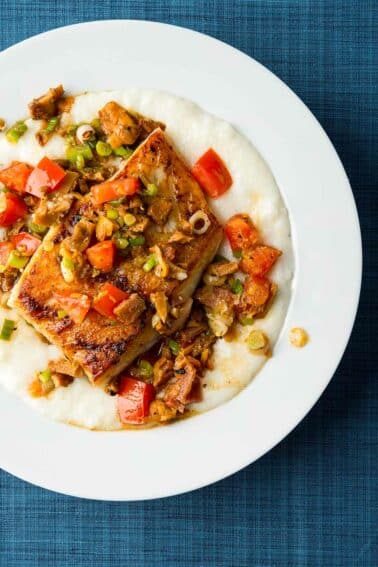
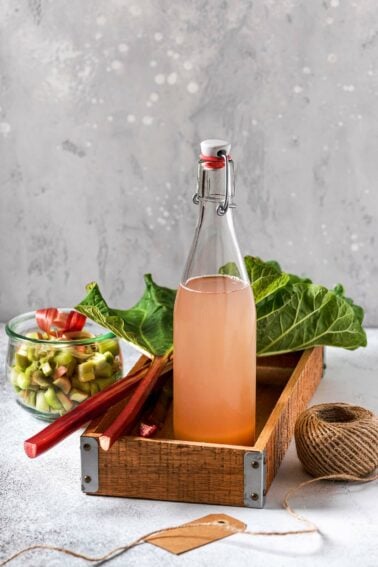
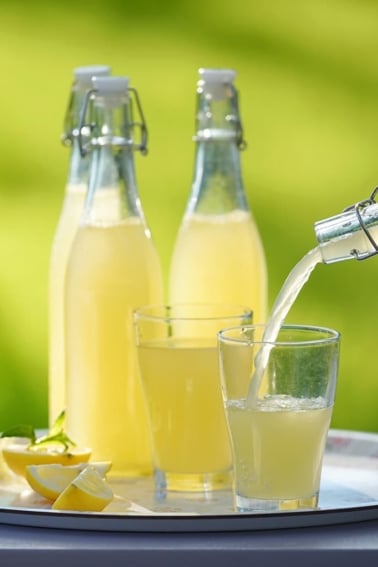
Thanks for your recipes, posts and great dialog generated on Elderflower cordial. I’m a huge fan of this under-appreciated drink (in the US only) and it’s on my bucket-list to make some in Spring.
Could you please let me know where specifically I can find wild bushes in Northern CA, and wonder if you’d share a couple of places you know they exist so I can make a picking trip? (I live near Concord and haven’t seen them – or at least don’t trust my judgement to know I’d be picking the right thing). Thanks very much in advance –
Sorry Fiona. I don’t give out my foraging spots. All I can tell you is to head inland. More elderberries in the Central Valley and Sierra than on the coast.
In years past I have used the berries to make jelly and wine. I never knew how awesome the flowers could be. I was able to collect enough blossoms to make two quarts of cordial. It is steeping as I write this post. Is there a way to process or preserve the elderberry cordial, besides just keeping it in the fridge? I would like to give it as gifts through out the year.
It will keep long enough to ship it to someone. Just tell them to put it in the fridge when they get it. And I’ve kept the cordial in cool places for a few weeks, but unless you get the sugar/water ratio to 1:1, making this more of a regular syrup, it will not keep at room temperature — it will ferment.
Unfortunately I don’t have access to fresh elderflowers where I am, can I use dried, and if so how much would be needed? I am guessing 1 cup? Thanks!
You can actually make a simple elderflower wine by covering the flowers in water, adding sugar, covering and leaving in a cool dark place for a couple of weeks. It’s excellent added to soda water.
Kimberly: Yep, I leave it out at room temperature.
Thank u so much for this post!
One question: If I’m just making simple syrup (no citrus), do I cover it and do I leave it at room temp or in the fridge?
Thanks!
Kimberly
Hi Hank – I particularly appreciated this section of your posting, which encourages people to not hammer the elder bushes they are gathering blossoms from:
“A good rule to live by is to not take more than a few flower heads from each elderberry bush: This ensures that the bush will have enough to spread itself, it makes you find more bushes — it’s never a good thing to have only one spot for anything you forage for — and, most importantly, selective picking means you can come back in a few months for the berries.”
While, like you, I do see quite a few elder shrubs in my area (around Boston), I am concerned that the burgeoning popularity of elderflowers might cause ecological damage to these plants and the oranisms dependent upon them. This native species (Sambucus canadensis) serves an important ecological function; indeed, it is the only home for an unusual species of beetle here n Massachusetts, the Elderberry Long-horned Beetle.
While I am not that worried about people gathering a few Elder flower clusters for their own use, I am worried about the adverse impacts of large-scale commercial gathering. I am not aware that this is happening yet (at least in this region), but I will be on the lookout for it.
My advice to anyone who wants to gather elder flowers on a large-scale basis: Please consider convincing a local farm to put in some elderberry bushes, or grow them yourself – that way you won’t need to hammer the wild populations.
Thanks for considering this suggestion.
Now I know what to do with the elderberry bushes we planted. Can you also use the berries to make a cordial or only the flowers? Thanks!